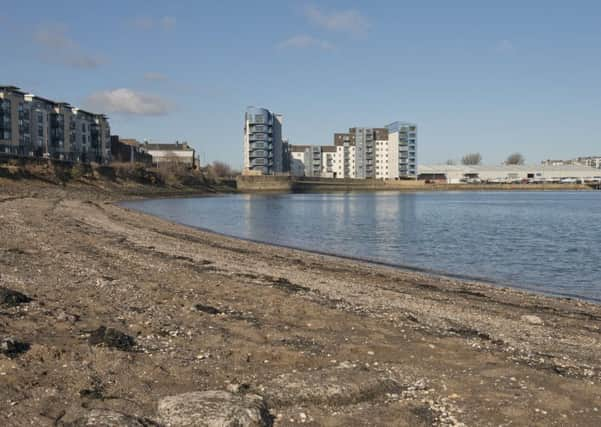Charlotte Johnson: Botanics pushes the boat out with shoreline exhibition


Time has not always been kind, industries have suffered and sensitive redevelopment is required. Yet, this seaboard is home to an internationally important flora and fauna which could soon harvest new benefits for those along the shore.
The Edinburgh Shoreline project has launched at a time of community desire for regeneration. It presents a real opportunity for tangible change along the 27km coastline. Steered by those who use the area for work and play – with backing from key agencies – it could become an enduring testament to the power of communities celebrating their past and protecting their future. While oyster beds have been lost, mussels polluted and fishing fleets faded into the past, fresh opportunities are clear.
Advertisement
Hide AdAdvertisement
Hide AdA new vibrancy can be felt in all kinds of activity around the beaches, harboursides and proms. Natural habitats can be at the heart of this renaissance. There is a rich inheritance here and many area and street names give us clues.


Take Laverockbank from laverock, a lark, or Peatdraught Bay, so called because in storms peats are said to be drawn into it by the current of the receding tides. Glassworks furnaces were situated in Salamander Street – so named because of the salamander’s association in folklore with fire.
A wonderful array of nature worth celebrating is here already. Sea sickness might have forced Charles Darwin to give up his trips to find marine specimens with the Newhaven fishermen but there are incredible finds in our midst and massive resilience is not always required.
Who would have thought the exotic sounding pink grasshopper might have a home behind Seafield sewage works? How many of us knew of the kestrel nesting on the Forth Road Bridge? Or, that Leith tern colony, hidden from view in the far reaches of Forth Ports, is the largest common ternery in Scotland and accounts for five per cent of the UK population?
There are many local experts and enthusiasts on subjects from lichens to fossils, art and history who can all help build a cohesive picture of past activities and potential resources for the future. They are being supported through hands-on projects and information dissemination from the Royal Botanic Garden Edinburgh (RBGE) with its Edinburgh Living Landscape partners, RSPB, SNH and others.


By connecting with scientists and conservationists in the new Shoreline project, everyone who lives, works or plays in the area will have the chance to celebrate our relationship with the sea and the plants and animals along the coast.
Developed by a steering group including Karen Chambers, vice chair of Scottish Wildlife Trust, with historian and researcher Elspeth Wills and Leonie Alexander, ELL project officer at RBGE, it sets out to be a fun-laden adventure tackling serious challenges faced by all inhabiting the coast.
If Edinburgh and the once independent communities along its shoreline have a weakened sense relationship with the sea, then now is the time to turn the tide. Our coast is a strange mix of dereliction, industry, forgotten beaches, new developments and abundant possibilities.
Advertisement
Hide AdAdvertisement
Hide AdDuring the next year there will be opportunities to search for little-known species, explore rock pools and mudflats, undertake practical conservation work and much more.
The centre piece of the project is a major shoreline exhibition at RBGE’s John Hope Gateway during the Edinburgh Festival. Images, films, information and ideas generated from shoreline communities here and in other countries will create an immersive, exciting experience.
The exhibition will be complemented by workshops, a coastal species garden, seminars, seafood fare and potentially donkey rides and rock! We also aim to organise shoreline events and installations such as a display of endangered coastal species.
The Shoreline Project is fairly ambitious. We hope it will lead to better connections, participation and knowledge and, ultimately, the more robust, beautiful and diverse shoreline that our capital deserves.
With support from the Heritage Lottery Fund and Green Infrastructure Community Engagement Fund, administered by Scottish Natural Heritage on behalf of the Scottish Government, we will celebrate the best of our seafaring communities.
We will provide resources and expertise to shoreline communities to develop projects important to them – relating for example to access, local history and shoreline species. All we ask is that you bring your enthusiasm.
Charlotte Johnson is Edinburgh Shoreline project manager, Royal Botanic Garden Edinburgh.